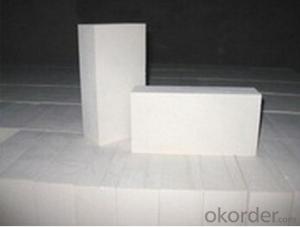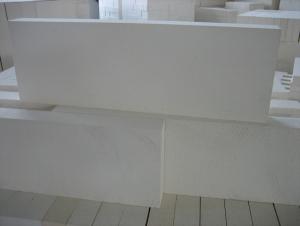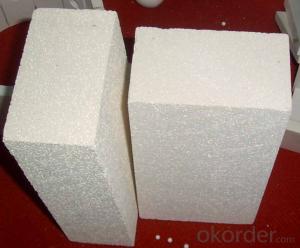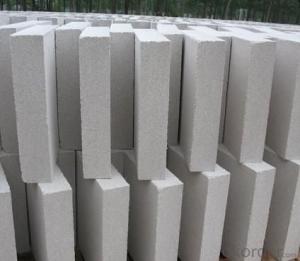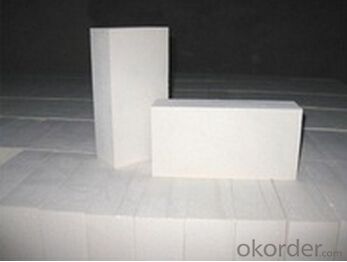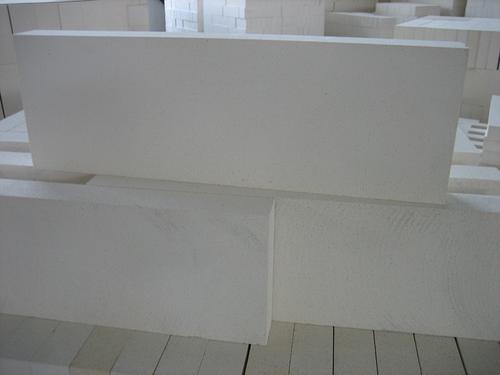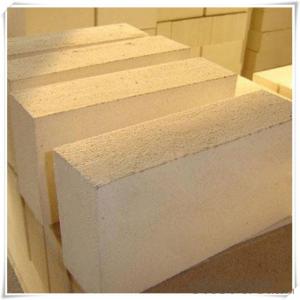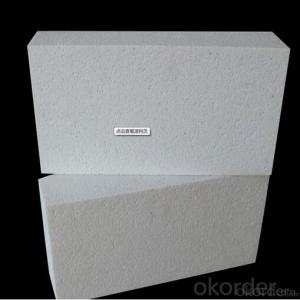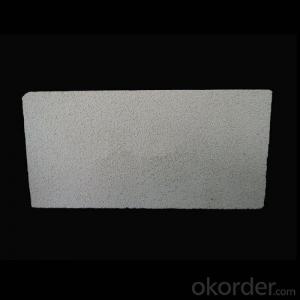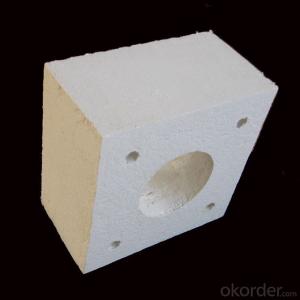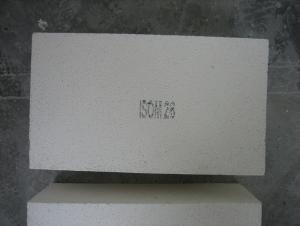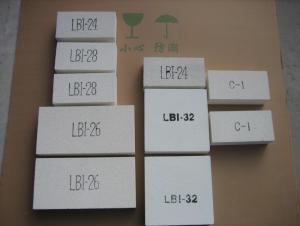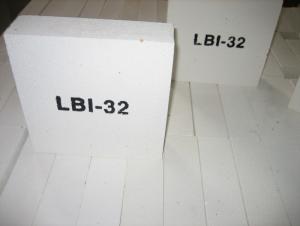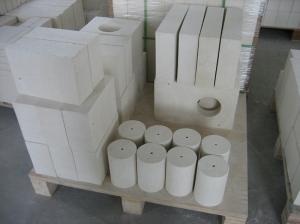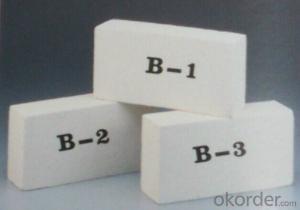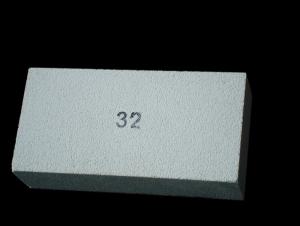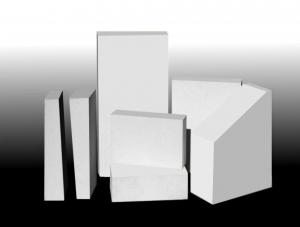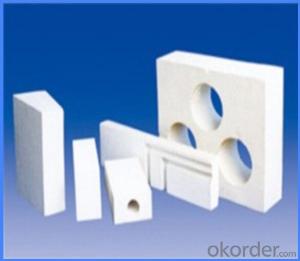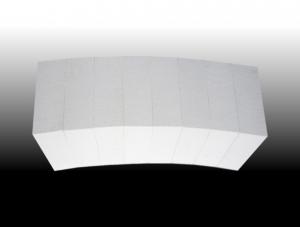Insulating Fire Brick - Refractory Mullite Insulating Refractory Brick JM 25
- Loading Port:
- Shanghai
- Payment Terms:
- TT OR LC
- Min Order Qty:
- 20 m.t.
- Supply Capability:
- 20 m.t./month
OKorder Service Pledge
OKorder Financial Service
You Might Also Like
Okorder series heat insulation brick
Okorder series thermal insulation brick is an effective, energy saving, low carbon, environmental protection advanced, according to the ASTM standard manufacturing products. Okorder series products have all kinds of materials in the field of metallurgy, industrial furnaces, aluminum, the best Li Ning petrochemical and insulation, electric power and glass ceramics. They can be used as part of an insulation or not to melt. Products have been widely used in the following furnace, achieved satisfactory results.
Application of heat preservation brick
Metallurgical Industry: blast furnace, hot blast furnace, heating furnace, etc..
Petrochemical Industry: ethylene cracking furnace, hydrogen furnace, the main furnace, heating furnace, etc..
Ceramic industry: roller kiln, kiln, etc..
Glass industry: glass furnace regenerator, etc.
Carbon industry: carbon furnace, etc..
Aluminum electrolysis industry: aluminum reduction cell, etc.
Other industries: tunnel kiln, shuttle kiln, etc..
Advantages of heat insulation brick
Low thermal conductivity: many air holes will bring good thermal insulation effect, energy saving.
High crushing strength: high crushing strength, volume stability.
Low heat storage: small heat storage, absorb more heat, energy-saving effect is obvious.
Chundu: High-speed Rail, low content of alkali metal impurities.
Accuracy: the size of the brick machining precision, cutting and grinding the special shape, speed up the brick.
Technical Data
ITEM | GJM30 | GJM28 | GJM26 | GJM23 |
Classification Temperature, ℉/℃ | 3000/1650 | 2800/1540 | 2600/1430 | 2300/1260 |
Bulk Density,g/cm³ | ≤1.0 | ≤0.9 | ≤0.8 | ≥0.5 |
Reheating Linear Change, % | ≤0.9 (1550℃,12 h) | ≤0.8 (1510℃,12 h) | ≤0.7 (1410℃,12 h) | ≤0.5 (1230℃,12 h) |
Al2O3 Content, % | ≥75 | ≥65 | ≥55 | ≥45 |
Fe2O3 Content, % | ≤0.5 | ≤0.6 | ≤0.7 | ≤1.0 |
Thermal Conductivity: | ||||
800℃, w/m.k | ≤0.39 | ≤0.37 | ≤0.35 | ≤0.18 |
1000℃, w/m.k | ≤0.43 | ≤0.41 | ≤0.39 | ≤0.20 |
1200℃, w/m.k | ≤0.48 | ≤0.46 | ≤0.43 | --- |
Insulating brick
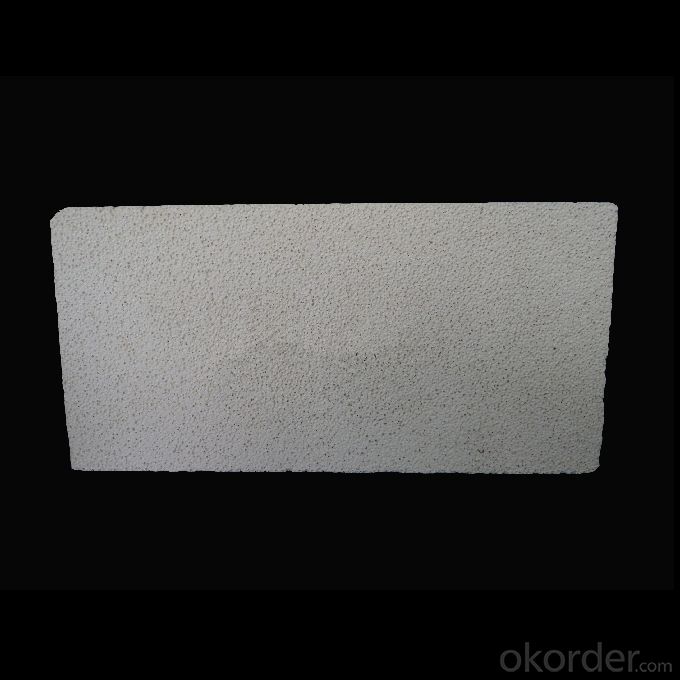
- Q: Can insulating fire bricks be used in the construction of drying ovens?
- Yes, insulating fire bricks can be used in the construction of drying ovens. These bricks are designed to withstand high temperatures and have excellent thermal insulation properties, making them ideal for creating a heat-efficient environment in drying ovens. They can help in maintaining a consistent temperature and preventing heat loss, thereby improving the drying process and energy efficiency of the oven.
- Q: What are the raw materials used in the production of insulating fire bricks?
- The raw materials used in the production of insulating fire bricks typically include a combination of alumina, silica, and various additives. Alumina is derived from bauxite ore, which is processed to extract the alumina content. Silica, on the other hand, is usually obtained from quartz or silica sand. These two materials form the main components of insulating fire bricks, providing them with high temperature resistance and thermal insulation properties. In addition to alumina and silica, other additives may be included in the production process to enhance certain characteristics of the bricks. For instance, clay may be added to improve the workability and plasticity of the mixture during shaping and molding. Various binders, such as organic or inorganic materials, may also be incorporated to enhance the strength and structural integrity of the bricks. Depending on the specific requirements and desired properties of the insulating fire bricks, other materials may be added as well. These can include zirconium, magnesium, calcium, or other refractory materials. These additives can help to further enhance the heat resistance, mechanical strength, and insulation properties of the bricks. Overall, the combination of alumina, silica, and other additives creates a composition that is able to withstand high temperatures, provide excellent insulation, and exhibit good structural integrity, making insulating fire bricks a valuable material in various industries such as metallurgy, ceramics, and kiln construction.
- Q: What is the recommended curing time for insulating fire bricks?
- The curing time for insulating fire bricks can vary based on factors like brick type, application, and manufacturer instructions. Generally, it is recommended to allow at least 24 to 48 hours for curing. This enables proper drying and hardening, ensuring stability and performance in high-temperature settings. To achieve optimal results, it is crucial to adhere to the manufacturer's guidelines and recommendations for curing time. Furthermore, factors like humidity, temperature, and ventilation can impact the curing process, so it is essential to consider them when determining the appropriate curing time for insulating fire bricks.
- Q: Can insulating fire bricks be used for insulation in aluminum smelters?
- Insulating fire bricks are capable of being utilized for insulation in aluminum smelters. Crafted from unique lightweight materials possessing exceptional insulation properties, these bricks are an optimal choice for high-temperature insulation needs. With aluminum smelters operating at exceedingly elevated temperatures, insulating fire bricks possess the ability to effectively endure and retain heat, thereby averting heat loss and enhancing energy efficiency. Moreover, these bricks exhibit resistance to thermal shock, a prevalent phenomenon in smelting procedures, rendering them highly appropriate for employment in aluminum smelters. Additionally, insulating fire bricks can establish a protective barrier, mitigating the risk of heat damage to neighboring structures and equipment. Consequently, implementing insulating fire bricks for insulation in aluminum smelters can augment thermal efficiency, diminish energy consumption, and guarantee a secure and proficient smelting process.
- Q: Do insulating fire bricks have a high heat storage capacity?
- Yes, insulating fire bricks have a high heat storage capacity. Insulating fire bricks are specifically designed to have low thermal conductivity, which means they are able to retain heat for longer periods of time. This makes them ideal for applications where heat storage is necessary, such as in furnaces, kilns, and other high-temperature environments. The high heat storage capacity of insulating fire bricks allows for efficient heat retention and distribution, ultimately improving energy efficiency and reducing heat loss.
- Q: Can insulating fire bricks be used in the construction of crucibles?
- Insulating fire bricks can indeed be utilized for constructing crucibles. These bricks are crafted from lightweight materials like clay and silica, boasting remarkable thermal insulation properties. Consequently, they are highly suitable for scenarios that require the preservation of high temperatures and minimal heat loss, such as crucible construction. Crucibles, extensively employed in industries like metallurgy and chemistry, serve the purpose of containing and melting materials at exceedingly elevated temperatures. By incorporating insulating fire bricks into crucible construction, heat loss is curtailed, energy efficiency is enhanced, and a more consistent temperature is maintained within the crucible, ultimately resulting in improved overall performance. Furthermore, the lightweight nature of these fire bricks facilitates easier handling and installation, further augmenting their appropriateness for crucible construction.
- Q: Can insulating fire bricks be used in thermal insulation panels?
- Insulating fire bricks possess the capability to be utilized in thermal insulation panels. These bricks are manufactured using lightweight materials, including clay, alumina, and silica, which exhibit exceptional thermal insulation properties. They are engineered to withstand extreme temperatures and deliver insulation across a range of applications, such as furnaces, kilns, and industrial equipment. When integrated into thermal insulation panels, insulating fire bricks aid in diminishing heat transfer and enhancing energy efficiency. They effectively trap and reflect heat, preventing its escape or entry into the insulated area. This renders them suitable for insulating walls, roofs, and other structures that necessitate thermal insulation. Furthermore, the installation of insulating fire bricks is hassle-free, as they can be cut or shaped to accommodate various spaces and configurations. This flexibility allows for personalized customization and ensures a secure and efficient insulation barrier. It should be noted that while insulating fire bricks provide exceptional thermal insulation, their effectiveness in sound insulation may be limited. Therefore, additional soundproofing measures may be required if soundproofing is also a requirement. In conclusion, insulating fire bricks represent a dependable choice for thermal insulation panels, offering superior insulation performance, durability, and versatility.
- Q: Can insulating fire bricks be used in blast furnaces?
- Yes, insulating fire bricks can be used in blast furnaces. Insulating fire bricks are designed to withstand high temperatures and provide excellent thermal insulation, making them suitable for lining the walls of blast furnaces. Their insulation properties help to minimize heat loss and improve energy efficiency in the furnace, ultimately enhancing the overall performance and productivity of the blast furnace.
- Q: Can insulating fire bricks be used in glass furnaces?
- Yes, insulating fire bricks can be used in glass furnaces. Insulating fire bricks are designed to have low thermal conductivity, which makes them ideal for use in high-temperature environments like glass furnaces. These bricks help to reduce heat loss from the furnace, resulting in improved energy efficiency and reduced operating costs. They also provide better insulation and help to maintain consistent temperatures inside the furnace, which is crucial for glass production. Additionally, insulating fire bricks have good resistance to thermal shock and can withstand the extreme temperatures and rapid temperature changes that occur in glass furnaces. Overall, the use of insulating fire bricks in glass furnaces can contribute to better furnace performance, increased productivity, and energy savings.
- Q: Are insulating fire bricks environmentally friendly?
- Insulating fire bricks can be considered environmentally friendly to some extent. They are made from natural materials, such as clay and shale, which are abundant and readily available. Additionally, their insulating properties can help reduce energy consumption in various applications, leading to lower carbon emissions. However, the manufacturing process may involve the use of high temperatures and kilns, which can contribute to air pollution. Furthermore, the disposal of these bricks at the end of their lifespan may pose challenges in terms of waste management. Thus, while insulating fire bricks have certain eco-friendly aspects, their overall environmental impact depends on various factors.
Send your message to us
Insulating Fire Brick - Refractory Mullite Insulating Refractory Brick JM 25
- Loading Port:
- Shanghai
- Payment Terms:
- TT OR LC
- Min Order Qty:
- 20 m.t.
- Supply Capability:
- 20 m.t./month
OKorder Service Pledge
OKorder Financial Service
Similar products
Hot products
Hot Searches
Related keywords
